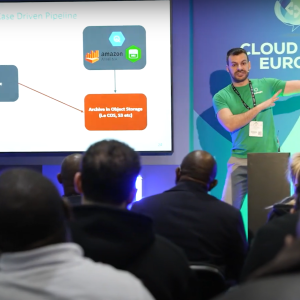It’s not only the bus, tube and rail networks that ground to a halt as heavy snow fell across the UK: it also left transport websites struggling to cope with the peak in demand as tens of thousands of people sought the latest travel information online.
The National Rail Enquiries website, as well as the sites of major train companies — and also for a time the Transport for London website — all ground to a halt as they became overloaded with traffic…[click continue reading to find out how cloud computing and transaction performance management could have helped]…
Of course it’s not easy for such transport websites to plan for such unprecedented peaks in usage — building the IT infrastructure with the necessary scalability might mean massive investment in systems that are massively under-utilised when there has not been a major weather incident, for example.
There is a way to do it though: to have capacity on call when you need it but only pay for what you use the rest of the time. It’s called cloud computing.
During Wimbledon week the wimbledon.org website attracts in the region of 8.5 million visitors, and over 40 million hits in a two to three week period. But it doesn’t have to pay for that scalability all year round, because the site is outsourced to IBM’s on-demand (or cloud) infrastructure.
Of course you need to have your automatic provisioning systems configured correctly for the cloud to automatically cope with peaks in demand: you could have a managed service that still limits you to too small a capacity threshold.
But if done right, there’s nothing better than cloud computing to cope with peaks in demand.
But mention should also be made here of website capacity planning technology. While unlikely to save a company from unexpected and sudden peaks in demand, it can help to smooth out capacity issues during more predictable peak periods — such as over Christmas for a retailer.
The UK online bank egg saw the availability of its website rise from 87% to 97% when it started using BMC’s capacity planning technology across its 200 Unix servers underpinning its site, while reaction time to alerts was cut by more than 10 minutes.
Precise Software Solutions is another name making noise in a space it is calling Transaction Performance Management. This includes not just website transactions but any transaction that happens in a business, whether inside its four walls or across its firewall to include partners or customers.
Precise’s technology saves a record of all of the events which make up the transactions, and then enables them to be analysed to within an inch of their life, helping IT administrators discover transaction problems, resolve them faster and indeed optimise transaction performance.
As Precise’s CEO Mark Kremer told me just last week, “Without this vast history of previous transactions, it’s impossible to optimise transactions, or to do ‘what-if’ type scenario planning.”
“But the real power of Precise’s technology,” said Kremer, “is not pinpointing a problem, but the faster time-to-resolution because we have sophisticated algorithms which help you go to the source of the problem based on previous experience in the knowledge-base.”
With technology like this, sites like Transport for London would have a clear picture of the kinds of surge in demand that is associated with an extreme weather event, and their IT department would more quickly know what steps should be taken to cope.






